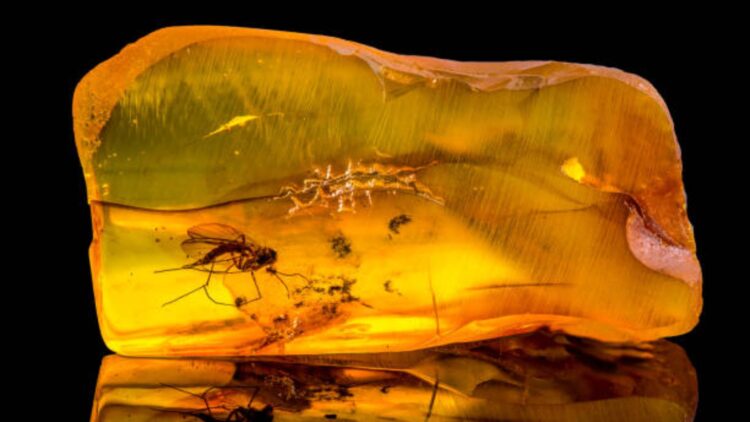Before letting your imagination run wild (especially for Jurassic Park fans), the specimens trapped in amber, which we will discuss below, do not preserve genetic material, and in addition, DNA cannot survive intact beyond a few thousand years. With this premise clarified, we can now talk about the discovery made by paleontologists working at the Genoveva quarry in the province of Napo, Ecuador. These are the oldest amber samples in South America, dating back to the Cretaceous, when dinosaurs still roamed the planet, and they reveal information about the ecology of the southern supercontinent, Gondwana.
A total of 60 amber fragments were found, which contain insects such as biting midges, non-biting flies, beetles, wasps, and ants. Besides insects, they also contained pollen and spores that help us understand that they grew alongside newly emerging flowering plants. Until now, amber had been found mainly in Lebanon and Myanmar, so this discovery in Ecuador sheds light and fills a much-needed gap, as explained by the geologist from the Central University of Ecuador, Carlos Bustamante.
Amber
Being the only gem of organic origin, amber is a fossilized plant resin formed from the resin of prehistoric trees over millions of years. Its importance in the world of paleontology lies in its warm color, its translucency, and above all, because it can contain prehistoric plants or insects that provide a great deal of information about the time in which they lived.
How is it formed?
Trees produce resin as a defense mechanism against external threats, which gradually hardens, and after millions of years, can become trapped in sediments and fossilize. It is then that living organisms or parts of plants can become encased in the resin, forming what is known as “inclusions”.
Amber Samples in South America
More than 100 million years later, paleontologists working in the Genoveva quarry in the Napo province, in the Amazonian region of Ecuador, found amber samples that belonged to the Cretaceous period, when dinosaurs still roamed the planet. These are the oldest samples in South America, and the information they provide reveals data about the ecology of the southern supercontinent, Gondwana.
The sample consists of 60 fragments in which 21 biological inclusions have been identified. Among them are insects such as non-biting flies, wasps, ants, beetles, and biting midges, capable of drawing blood from dinosaurs and reptiles. Additionally, flora has also been found, such as pollen and spores, suggesting that ferns and conifers grew alongside newly emerging flowering plants.
Filling the gaps
This discovery has shed light on the lack of information about the insects from the Cretaceous tropics that inhabited South America. This importance is due to the fact that most of the amber found to date has come from Lebanon and Myanmar, and from regions in the northern hemisphere, far from those found in Ecuador.
According to one of the geologists and authors of the study from the University of Ecuador, Carlos Bustamante, “This is a rare glimpse of a world in transition. It shows how flowering plants and the insects that pollinate them were already shaping ecosystems in the time of the dinosaurs”.
This discovery is very valuable for the field of paleontology and for understanding more and better the workings of the Earth’s flora and fauna millions of years ago, but that does not mean that the species found retain intact DNA through which extinct species could be brought back to life. No, fortunately or unfortunately, that is only a fiction possible in the Jurassic Park saga.
